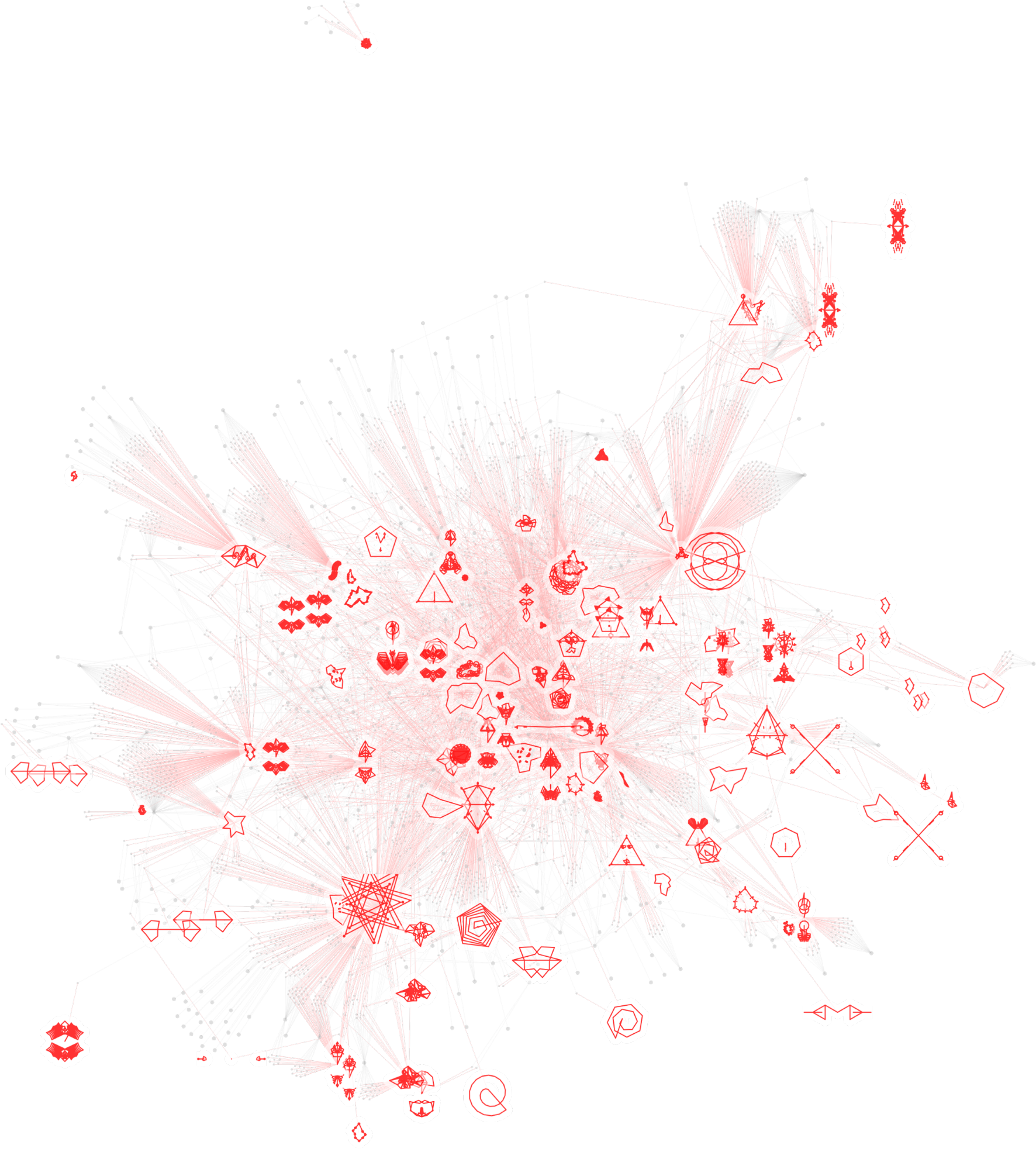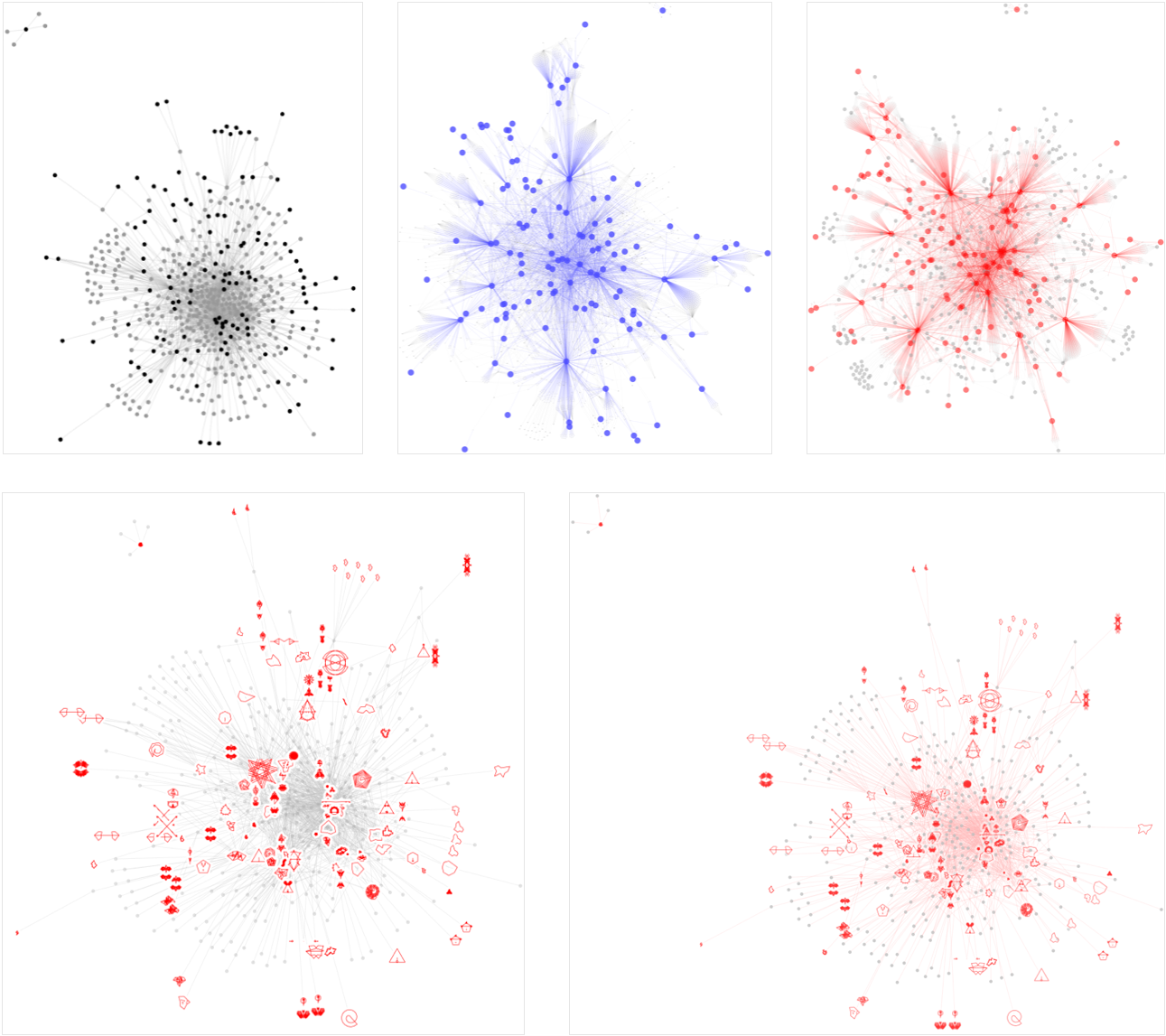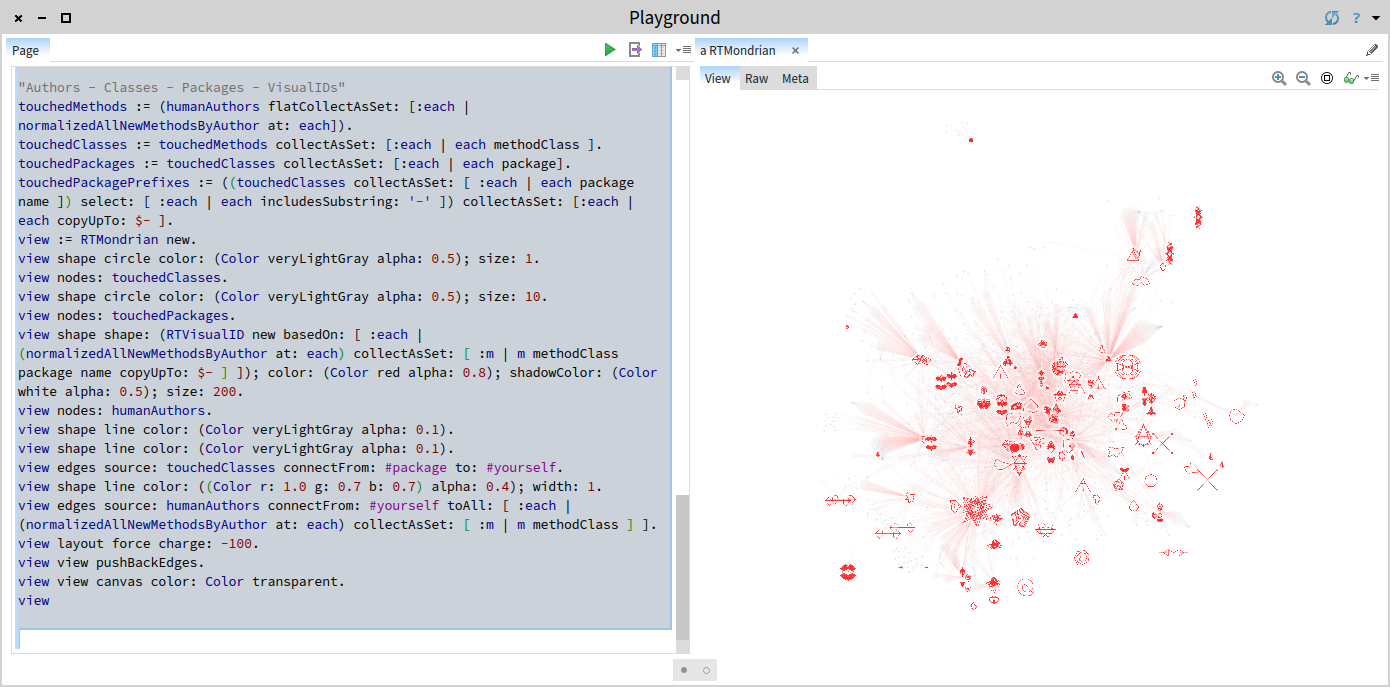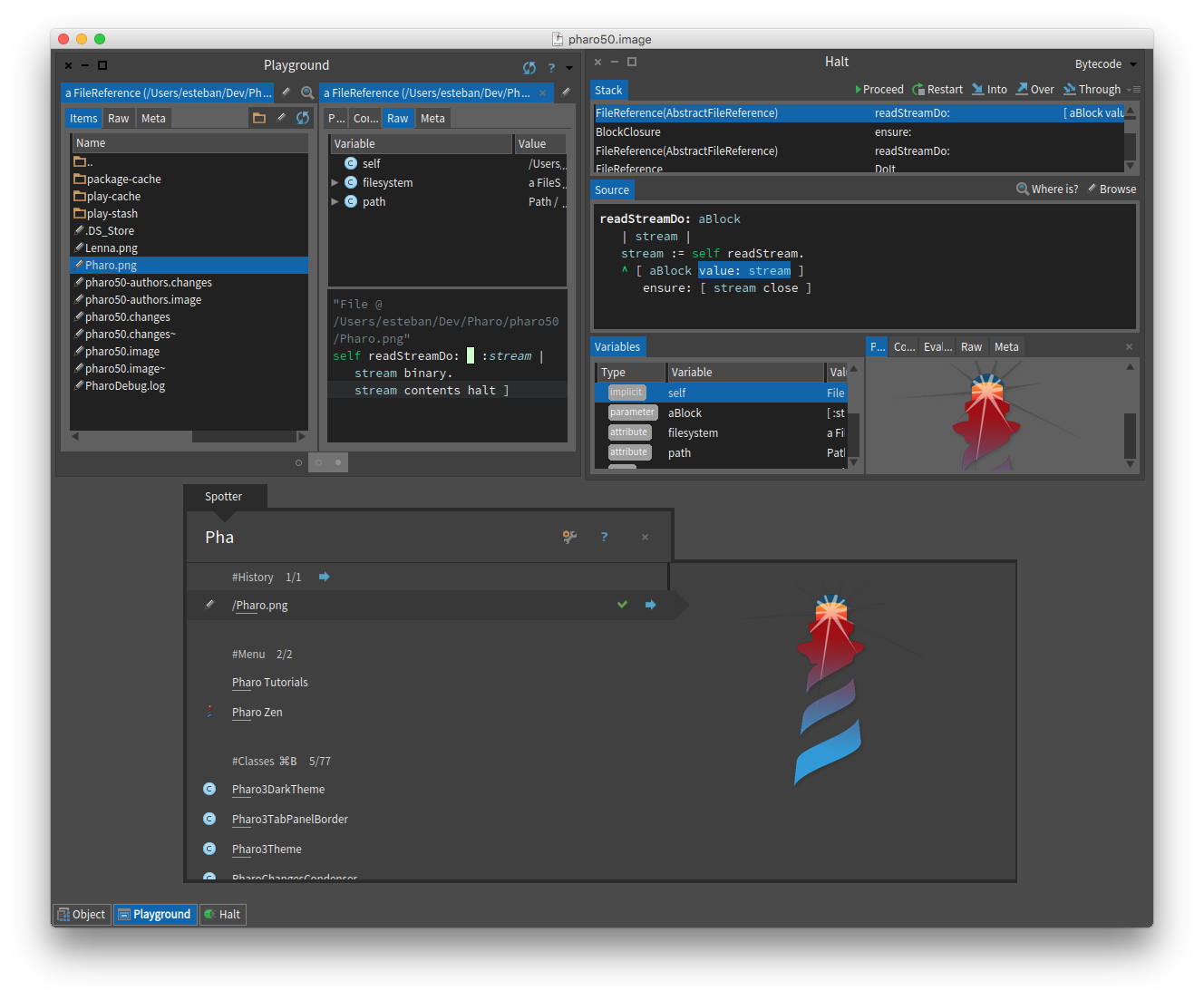Communicating Pharo 5.0
Pharo 5.0 is out. This was a great ride.
As it has become customary, I worked on capturing one aspect of the work around Pharo 5.0 in a visualization. Choosing only one prominent aspect was not easy this time. For example, the VM just got 30% faster. Just like that. And there is a new moldable debugger. And the reflection mechanisms just got a significant boost to make code instrumentation ridiculously inexpensive. And there are more. All these make for amazing stories, and we would have been happy with only one of these.
And that is exactly the most interesting story to tell. There used to be a time when one person could keep track of what is going on in the community. Not anymore. We have reached a tipping point at which there are just too many things that happen simultaneously. We have seen an amazing surge in the energy invested around Pharo, and this has been keeping up for some time now.
So, how should we capture this activity? Looking closer, we noticed that the attribution list included 100 distinct developers that have contributed code that entered in Pharo 5.0. Indeed, not all have contributed in equal measure, and some actually produced code a while ago. Still, when so many brains come together to build a common system, amazing things can happen.
100 contributors is a lot, especially when it happens in an open-source distributed environment, and when their effort is about modifying the core of an ecosystem. Enabling all these people to work in concert is a goal of Pharo. That is why Pharo is more than code. Pharo is a project of building an evolving community that reinvents software development.
To expose this effort I built the visualization that accompanied the official release announcement.

The picture depicts in red all authors of new code using automatically rendered glyphs based on a technique called VisualID. This is a new feature available in Roassal2 and was mainly created by Ignacio Fernandez and Alexandre Bergel. The rendering algorithm requires a way to retrieve the similarity of the rendered entities, and in our case, the similarity is determined by the prefixes of the packages that the different authors have touched. The authors are connected to the classes that they have touched using red edges, and the classes are connected to their packages using gray edges. The overall graph is laid out using a force-based layout.
The main goal of the visualization was to capture the activity of the authors. We can spot different clusters of people both due to location proximity and due to the similarity of glyphs. But, the most amazing thing to observe is that only one author is far apart from the rest (at the top), while all others are linked in one way or another. This is an amazing showcase of collaboration.
As is always the case, building this visualization was not a linear process. The overall effort spanned several days, and dozens of variations. Here are some.

Building each of these did not take long. What took longer was to trim the data and find a balance that captured both the activity and the amount of work that made Pharo 5.0 happen. Building pictures is not difficult. However, building meaningful pictures requires multiple iterations and this is where a live rich environment plays a critical role. I leave it up to you to decide if the end result was worth that effort.
The code that produces the final visualization can be found at http://ws.stfx.eu/J2NFUA9TVOH7, and it also includes the loading of the Roassal visualization engine, the analysis of methods and the extraction and trimming of authors. You can simply paste it in a Spotter opened in a plain Pharo 5.0 image to reproduce the Playground as seen below.



